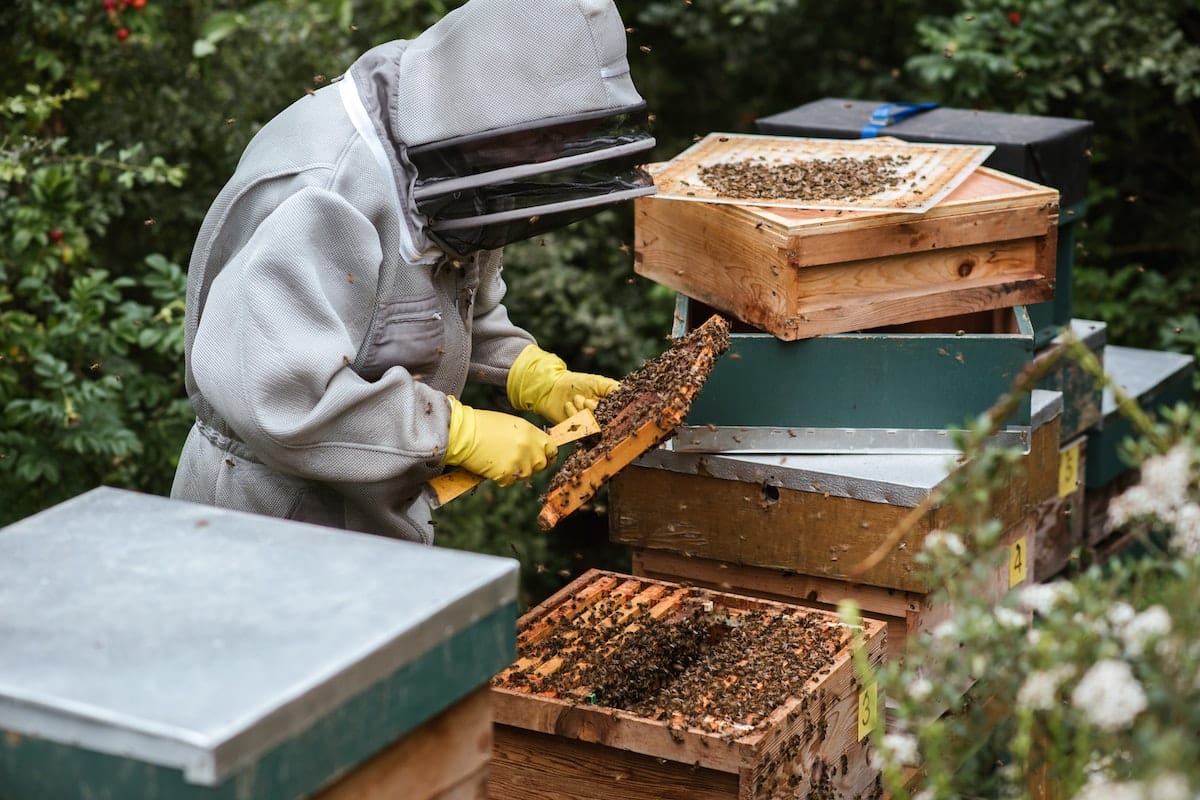As a beekeeper, you know the importance of bees and their role in our ecosystem. Why not put your knowledge to good use and start a bee farm? It’s a great way to be sustainable and support local agriculture. Plus, it’s easier than you think to get started – even on a budget. Here’s what you need to know to get started.
Research the costs of setting up a bee farm.
Starting a bee farm requires careful planning and forethought. With the costs of everything from beehives to protective gear mounting up quickly, one must understand what investments one needs to make upfront before getting started. Depending on the size of the operation, there may be startup costs for acquiring land, obtaining certification, and buying hives that can run anywhere from $300 to $500 or more.
Additionally, ongoing costs related to inspections, hive maintenance, and replacement parts should be considered when researching the costs associated with starting a bee farm. Doing your research can help ensure you’re investing wisely in the right hive equipment and materials for successful beekeeping.
Create a business plan and find customers.
Creating a business plan is essential for any agricultural venture. Starting with an outline of your objectives, your target market, and how you will market the products can help structure your plans. Additionally, research potential customers such as local farmers’ markets and organic food stores who may be interested in buying your hive products.
It would be best if you also looked into grants, subsidies, and other funding sources that could help with the costs of starting a bee farm. If you don’t have the upfront capital to invest in a bee farm, several affordable agricultural loans are available specifically for those looking to start this business. Many of these loans offer competitive interest rates and flexible repayment terms.
Finally, as you move forward in your beekeeping venture, develop an emergency plan just in case something goes wrong. This can include backup hives and protecting your bees from pests or other environmental threats.
Find a location for your farm that has good conditions for bees.
Choosing the perfect location for your farm is essential for a successful beekeeping operation. Ideally, choose a spot with plenty of sunlight and warm weather but also has some shady areas and protection from extreme temperatures. A place close to the water – such as a river or lake – can help provide further shelter, while other farms and open land nearby should offer a good source of pollen and nectar.
Furthermore, you should ensure that your farm is away from roads and industrial parks with large amounts of traffic, as such places can easily disrupt the colonies’ delicate environment. Consider these suggestions for your farm’s ideal location so bees may thrive!
Buy the necessary equipment for your bee farm.

Starting a bee farm is no small task and requires the correct equipment to help maximize productivity and ensure the safety of those tending the hives. If you want to purchase quality items, such as hive boxes and frames, look for dealers specializing in beekeeping supplies. This will allow you access a wider selection of products suitable for your location, climate, and budget.
As for protective clothing and tools like smokers, there is no substitute for materials specially designed for beekeepers – often, generic apparel may not offer adequate protection or be made of materials that can damage your bees. Investing in the right materials now will save you time and money in the long run.
Set up your bee farm and start raising bees!
Setting up a bee farm can be a gratifying experience that yields many benefits. Bees are great for the environment and offer a plentiful supply of honey and other products like wax and propolis. To get started, you’ll need to do your research and acquire proper equipment such as hives, protective clothing, feeding supplies, hive tools, and more.
Make sure to find out regulations related to beekeeping in your area before getting started. With the right setup and sufficient dedication, bee farming can provide ample opportunities for education along with natural products that everyone can enjoy. Take the plunge and get ready to see the rewards of raising bees!
If you’re interested in starting a bee farm on a budget, there are a few things you need to do. First, research the costs of setting up a bee farm, create a business plan, and find a location that has good conditions for bees. Next, buy the necessary equipment for your bee farm and set it up. Finally, raise your bees! With some patience and effort, you can have a successful bee farm on a budget.
